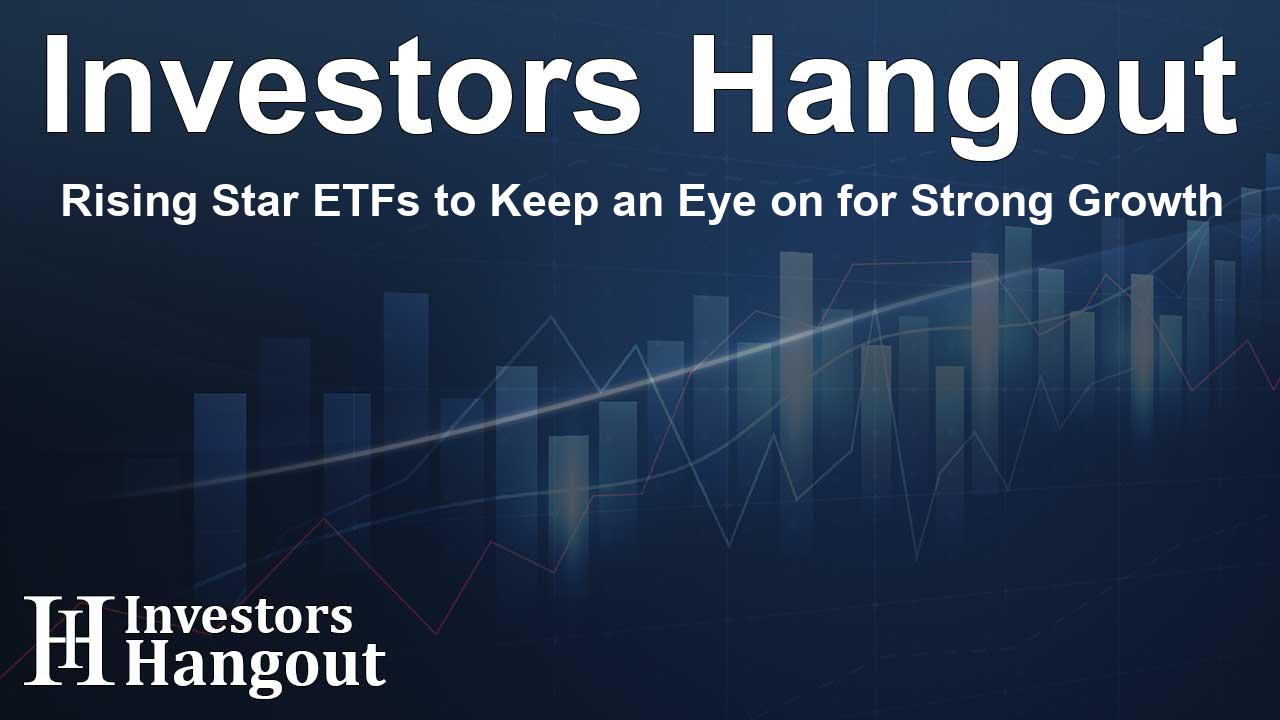Rising Star ETFs to Keep an Eye on for Strong Growth

Emerging Active ETFs: Gaining Popularity
The active ETF market in the U.S. is evolving beyond the traditional offerings from major asset managers. Smaller funds are stepping into the limelight, showcasing innovative strategies often paired with tax benefits that come with the ETF structure. Despite their smaller size, these nimble funds, typically under $200 million in assets, present fascinating opportunities for investors looking to diversify their portfolios.
Recent statistics from Morningstar illustrate a notable trend: Inflows into active ETFs reached an impressive $44.8 billion in a recent month, marking the highest monthly inflow on record. This surge indicates that active ETFs are starting to captivate investor interest, surpassing the 10% market share of total ETF assets for the very first time. Over the past year, active ETFs have attracted 31% of all ETF inflows, solidifying their presence within the expansive $7 trillion ETF marketplace.
Funds Worth Monitoring
Investors should take note of several standout active ETFs that have managed to carve out a niche for themselves. One such fund is the Jensen Quality Growth ETF (JGRW), which targets high-quality companies with robust competitive advantages. With approximately $68 million in assets, JGRW seeks to provide stability and growth, particularly during turbulent market phases, reminding us of the security often found in well-established companies.
Another noteworthy fund is the JPMorgan International Growth ETF (JIG). This ETF has a global focus, prioritizing growth opportunities in industries populated by steadily performing companies such as Taiwan Semiconductor (TSM) and Tencent Holdings Ltd (TCEHY). This diverse approach positions JIG as a compelling option for those interested in international market exposure.
Next in line is the T. Rowe Price Capital Appreciation Equity ETF (TCAF). This fund adopts a strategy akin to T. Rowe Price’s established mutual fund, blending growth and value investments. It holds both large-cap stocks and some fixed-income assets to mitigate risk—all attractive features for conscientious investors.
The Shift in Investor Preferences
The dramatic rise of active ETFs signals a significant shift in investor preferences. As asset managers increasingly launch innovative products, many are transforming existing mutual funds into ETF formats. Investors are drawn to active ETFs for their potential downside protection and the tendency for fees to decline, providing a more cost-effective option as they become integral parts of model portfolios offered by brokers and financial advisors.
While larger players like JPMorgan Asset Management and Dimensional Fund Advisors currently lead the inflow rankings, there is growing anticipation that smaller Active ETFs may become the next breakout stars in the market. As investor awareness of these funds rises, their growth potential could mirror that of their successful mutual fund counterparts.
Why ETFs Are Attracting Attention
The increasing prominence of active ETFs is clearly correlating with a broader trend among practitioners in finance. Many advisors and leading investment professionals are advocating for the inclusion of these flexible investment vehicles, which offer diverse, nuanced strategies in contrasting market scenarios. Investors seeking tailored solutions may find that the accessibility and inherent flexibility of ETFs provide the advantages they need to meet their financial goals.
Conclusion
The active ETF landscape offers a variety of investment options, particularly for those who seek to diversify their portfolios with higher quality and innovative strategies. As more investors recognize the potential of actively managed ETFs, we may witness a significant shift in market dynamics. Funds like the Jensen Quality Growth ETF (JGRW), JPMorgan International Growth ETF (JIG), and T. Rowe Price Capital Appreciation Equity ETF (TCAF) are poised to benefit from growing investor interest.
Frequently Asked Questions
What are active ETFs?
Active ETFs are exchange-traded funds managed by investment professionals who actively make investment decisions on behalf of the fund, rather than simply tracking an index.
Why are active ETFs becoming more popular?
Investors appreciate that active ETFs offer potential downside protection, lower fees, and innovative investment strategies, making them an attractive alternative to traditional mutual funds.
Can you name some notable active ETFs?
Some noteworthy active ETFs include the Jensen Quality Growth ETF (JGRW), JPMorgan International Growth ETF (JIG), and the T. Rowe Price Capital Appreciation Equity ETF (TCAF).
How do active ETFs compare to traditional mutual funds?
Unlike traditional mutual funds, which are priced at the end of the trading day, active ETFs are traded on the stock exchange throughout the day, providing more liquidity and the potential for tax advantages.
What factors should I consider when investing in ETFs?
When investing in ETFs, consider the fund's management team, strategy, fees, and performance history to ensure alignment with your investment goals.
About The Author
Contact Owen Jenkins privately here. Or send an email with ATTN: Owen Jenkins as the subject to contact@investorshangout.com.
About Investors Hangout
Investors Hangout is a leading online stock forum for financial discussion and learning, offering a wide range of free tools and resources. It draws in traders of all levels, who exchange market knowledge, investigate trading tactics, and keep an eye on industry developments in real time. Featuring financial articles, stock message boards, quotes, charts, company profiles, and live news updates. Through cooperative learning and a wealth of informational resources, it helps users from novices creating their first portfolios to experts honing their techniques. Join Investors Hangout today: https://investorshangout.com/
The content of this article is based on factual, publicly available information and does not represent legal, financial, or investment advice. Investors Hangout does not offer financial advice, and the author is not a licensed financial advisor. Consult a qualified advisor before making any financial or investment decisions based on this article. This article should not be considered advice to purchase, sell, or hold any securities or other investments. If any of the material provided here is inaccurate, please contact us for corrections.
